Submarines of the Soviet Navy - Page 1
It also developed a third type of nuclear-powered submarine (called SSGNs) designed specifically to launch cruise missiles against American aircraft carrier task forces. At its peak in 1980, the Soviet submarine force numbered 480 boats, including 71 fast attacks and 94 cruise and ballistic missile submarines. Because the names of individual Soviet submarines are seldom known abroad, the usual practice is to refer to them only as a member of a submarine class. The most widely known class names are those assigned as code names by NATO, such as Alfa, Charlie, and Kilo.
Soviet Alfa-Class Nuclear-powered Attack Submarine
After the prolonged testing of a 1970 prototype, the Soviet Union built
six Alfa-class boats between 1979 and 1983. These highly automated boats
require only small, 30-man crews. Combining a liquid-metal cooled reactor
propulsion system with a titanium hull, Alfa-class boats achieve exceptionally
high underwater performance, a top speed of 43 knots (80 km/hr) and an
operational depth of 2,000 feet (600 m).
Soviet Typhoon-Class Nuclear-powered Ballistic Missile Submarine
The largest submarines ever built, the first Typhoon-class ships entered
service in 1977. They are 563 feet (172 m) long, have a beam of 81 feet
(25 m). Performance figures can only be estimated: speed submerged, 30
knots (56 km/hr) and operational depth, 1,300 feet (400 m). Typhoons carry
20 SS-N-20 "Sturgeon" underwater-launched ballistic missiles.
NATIONAL MUSEUM OF AMERICAN HISTORY
Soviet Kilo-Class Diesel-Electric Attack Submarine
Unlike the United States, the Soviet Union continued to build diesel-electric
submarines throughout the Cold War. Kilo-class boats began to enter service
in 1979 and are still being built for export. They have a surface speed
of 12 knots (22 km/hr) and can make well over 16 knots (30 km/hr) submerged.
Diesel-electric submarines can be effective for missions such as coastal defense, where high speed and long range are not crucial. Operating on virtually silent electric motors underwater, they are inherently quieter than nuclear-powered boats with their coolant pumps. Diesel-electric submarines are also less costly to build and maintain.
US NAVAL INSTITUTE
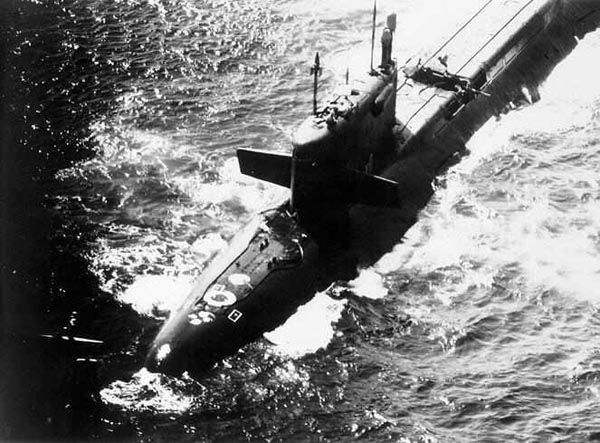
SOVIET K219 distress
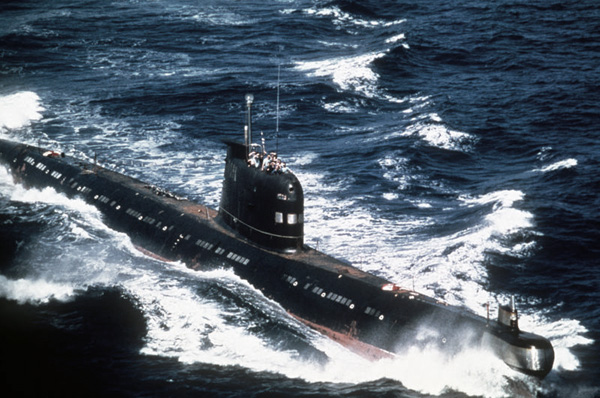
SOVIET FOXTROT CLASS PATROL SUB
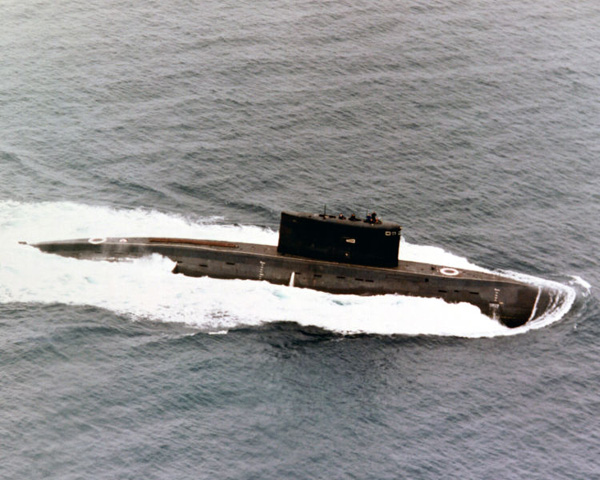
SOVIET KILO CLASS SUB
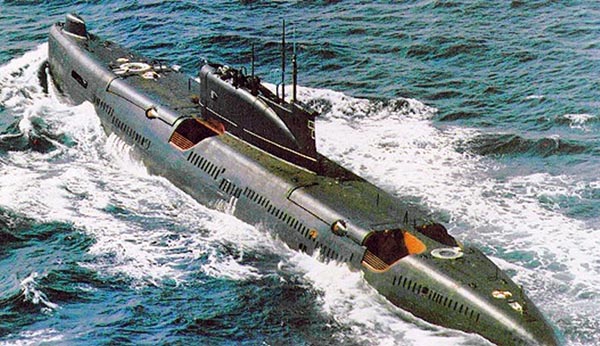
Soviet Julliett Class Guided Missile Sub
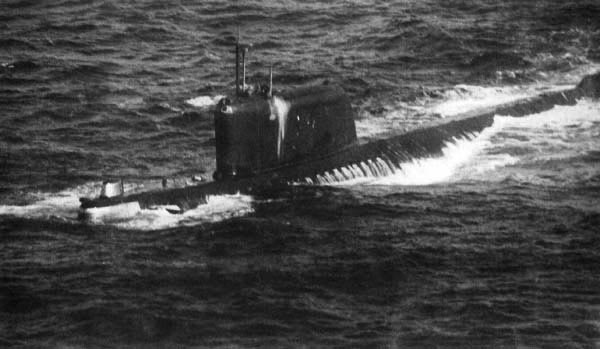
SOVIET SUB K-19
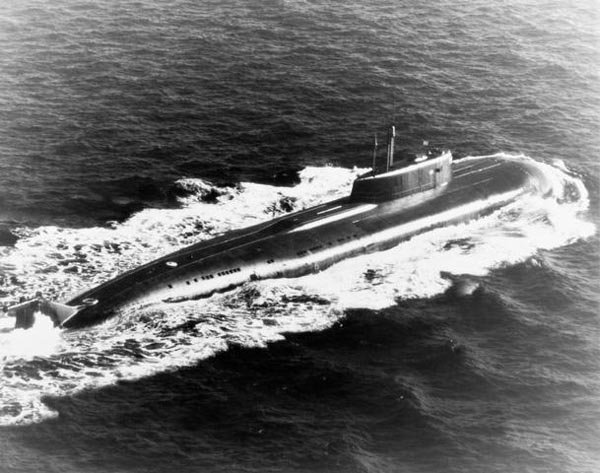
SOVIET Oscar Class submarine KURSK-A leak of hydrogen peroxide exploded
torpedo room-118 men lost